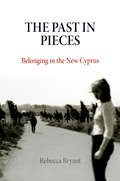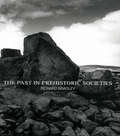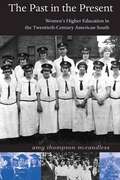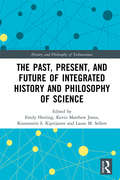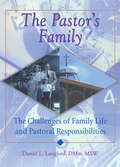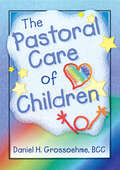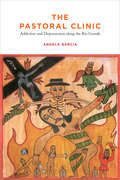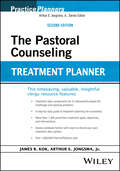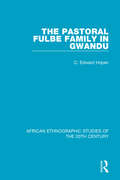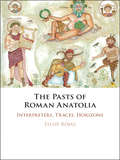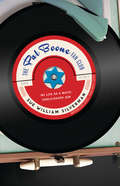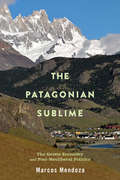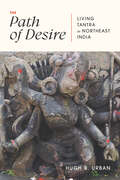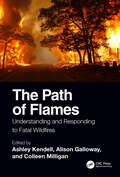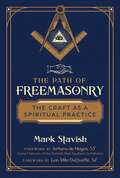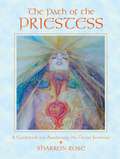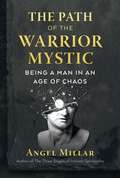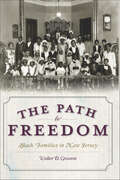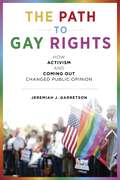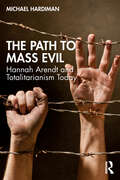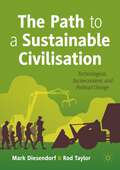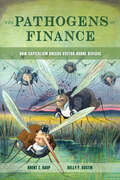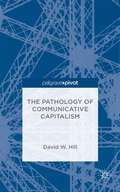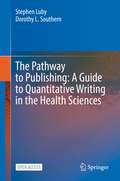- Table View
- List View
The Past in Pieces: Belonging in the New Cyprus (Contemporary Ethnography)
by Rebecca BryantOn April 23, 2003, to the surprise of much of the world, the ceasefire line that divides Cyprus opened. The line had partitioned the island since 1974, and so international media heralded the opening of the checkpoints as a historic event that echoed the fall of the Berlin Wall. As in the moment of the Wall's collapse, cameras captured the rush of Cypriots across the border to visit homes unwillingly abandoned three decades earlier. It was a euphoric moment, and one that led to expectations of reunification. But within a year Greek Cypriots overwhelmingly rejected at referendum a United Nations plan to reunite the island, despite their Turkish compatriots' support for the plan. In The Past in Pieces, anthropologist Rebecca Bryant explores why the momentous event of the opening has not led Cyprus any closer to reunification, and indeed in many ways has driven the two communities of the island further apart.This chronicle of the "new Cyprus" tells the story of the opening through the voices and lives of the people of one town that has experienced conflict. Over the course of two years, Bryant studied a formerly mixed town in northern Cyprus in order to understand both experiences of life together before conflict and the ways in which the dissolution of that shared life is remembered today. Tales of violation and loss return from the past to shape meanings of the opening in daily life, redefining the ways in which Cypriots describe their own senses of belonging and expectations of the political future. By examining the ways the past is rewritten in the present, Bryant shows how even a momentous opening may lead not to reconciliation but instead to the discovery of new borders that may, in fact, be the real ones.
The Past in Prehistoric Societies
by Richard BradleyThe idea of prehistory dates from the nineteenth century, but Richard Bradley contends that it is still a vital area for research. He argues that it is only through a combination of oral tradition and the experience of encountering ancient material culture that people were able to formulate a sense of their own pasts without written records.The Past in Prehistoric Societies presents case studies which extend from the Palaeolithic to the early Middle Ages and from the Alps to Scandinavia. It examines how archaeologists might study the origin of myths and the different ways in which prehistoric people would have inherited artefacts from the past. It also investigates the ways in which ancient remains might have been invested with new meanings long after their original significance had been forgotten. Finally, the author compares the procedures of excavation and field survey in the light of these examples.The work includes a large number of detailed case studies, is fully illustrated and has been written in an extremely accessible style.
The Past in the Present: Women's Higher Education in the Twentieth-century American South
by Amy T. McCandlessThe history of higher education in the 20th-century South, like the history of the region, both mirrors and diverges from the national pattern. Not surprisingly the region’s demographic, economic, social, political, and cultural characteristics have accounted for many of the variations between the education of southern women and women in the rest of the nation.
The Past, Present, and Future of Integrated History and Philosophy of Science (History and Philosophy of Technoscience)
by Emily Herring Kevin Matthew Jones Konstantin S. Kiprijanov Laura M SellersIntegrated History and Philosophy of Science (iHPS) is commonly understood as the study of science from a combined historical and philosophical perspective. Yet, since its gradual formation as a research field, the question of how to suitably integrate both perspectives remains open. This volume presents cutting edge research from junior iHPS scholars, and in doing so provides a snapshot of current developments within the field, explores the connection between iHPS and other academic disciplines, and demonstrates some of the topics that are attracting the attention of scholars who will help define the future of iHPS.
The Pastor's Family: The Challenges of Family Life and Pastoral Responsibilities
by Harold G Koenig Daniel L LangfordDescribing the difficulties of balancing a career and family life, The Pastor’s Family: The Challenges of Family Life and Pastoral Responsibilities is a personal narrative that discusses the all-too-familiar practice of neglecting your family for your job. Pastors will learn the importance of balancing time and attention between their families and religious careers by exploring the problems caused by one pastor’s prolonged absence from home. Containing research and first-hand experiences, The Pastor’s Family calls for a change in ministry policies that will enable pastors to devote as much time to their families as they do to their congregations.Containing stories and anecdotes from the author, his wife, and his two children, this book offers suggestions on how to improve the physical, emotional, and spiritual health of a pastor’s family. The information and insight provided by The Pastor’s Family will also help pastors’wives realize that they are not alone in their demanding roles and will help church policymakers discover the need to improve relations between the congregation and the pastor’s family. With the hope that the universal problems of pastors’families will be revealed, the author shares with you methods that have helped bring him and his family closer together, including: understanding the expectations of the stereotypical “superpastor” and learning how to set boundaries between family life and career realizing that a pastor’s family is subject to the same problems and challenges other families face and helping your family deal with this pressure learning the various definitions of codependency and how this can attribute to the neglect of your family discussing the history of abuse of pastors’families through the Bible and famous religious figures recognizing the discrimination of a pastor’s wife and her sufferings, such as coping with her husband’s various psychological challenges and being expected to always help her husband with his career discovering how conflicts can provoke communication, release emotions, identify and clarify problems, and permit individualization understanding why people feel a loss of power or personal rejection when their requests are not grantedEmphasizing the practice of setting boundaries, The Pastor’s Family examines ways to promote assertiveness through self-talk and self-differentiation that will help you defeat codependent behavior. This will teach you that it is all right to say “no”-- that it is all right to do things for yourself. From The Pastor’s Family, you will learn how to correct the ideology that makes many pastors feel they must honor every parishioner request, despite the effect it will have on his family. Through stories of hardship and personal revelations, this book will help you realize the need for church policy reforms that will allow pastors to be looked upon as humans who have familiesbesides their parishioners.
The Pastoral Care of Children
by Harold KoenigExplore a new way of pastoral care that enables caregivers to develop relationships and provide meaningful pastoral care to the children and youth they encounter! The Pastoral Care of Children focuses on the need for pastoral caregivers, clergy and chaplains to develop relationships with youths and gives you suggestions to overcome the anxiety associated with caring for an acutely ill child through unique, playful, and child-centered approaches. Many pastoral caregivers have high anxiety when children are ill or hurt, are unsure how to have a substantive conversation with a nine-year old, or their fears of what could be said keep them from hearing what children have to say. The effective approaches in The Pastoral Care of Children are illustrated to assist you with serving the spiritual needs of children. You will explore actual pastoral care experiences that will help you gain confidence in handling situations such as a teenager’s desire to be baptized out of fear of death when neither he nor his parents believe in Christ. Intelligent and heartfelt, this valuable book gives you a complete theological exploration of ministering to children who may ask you “Why me?”, “Why do people have to die?” and “What happens to children if they die before they are baptized?” The Pastoral Care of Children helps you answer these questions with meaningful responses that are genuine and grounded with yourself, and reflect the parents’beliefs. Some of the help you will discover in The Pastoral Care of Children includes: understanding the similarities and differences of caring for children in comparison to adults, such as different vocabularies but similar emotions, and realizing that children are very perceptive using play as a tool, for example referring to a puppet’s experience in reference to the child to eliminate the child’s self-consciousness and help him or her open up confronting pastoral issues in acute care settings, such as fear, guilty feelings, and anger, from parents, family and the child helping children recover from mental health issues such as depression, eating disorders, and identity and self-esteem issues by using cognitive therapy conducting prayer and rituals with children such as baptism, naming ceremonies, anointings, and funerals to assist the child and family through this spiritual rite of passage Complete with child and family focused approaches for dealing with the questions surrounding death, The Pastoral Care of Children also provides you with several cited scriptures, and a list of questions you may be asked by a child who is facing death. You will learn from actual circumstances pastoral caregivers have encountered and discover how to approach topics, and answer questions on God and death. The Pastoral Care of Children, an extremely resourceful book that will assist you in overcoming anxiety and help you deliver thoughtful and uplifting pastoral care to children and youth.
The Pastoral Clinic
by Angela GarciaThe Pastoral Clinic takes us on a penetrating journey into an iconic Western landscape--northern New Mexico's Española Valley, home to the highest rate of heroin addiction and fatal overdoses in the United States. In a luminous narrative, Angela Garcia chronicles the lives of several Hispano addicts, introducing us to the intimate, physical, and institutional dependencies in which they are entangled. We discover how history pervades this region that has endured centuries of material and cultural dispossession, and we come to see its heroin problem as a contemporary expression of these conditions, as well as a manifestation of the human desire to be released from them. Lyrically evoking the Española Valley and its residents through conversations, encounters, and recollections, The Pastoral Clinic is at once a devastating portrait of addiction, a rich ethnography of place, and an eloquent call for a new ethics of care.
The Pastoral Counseling Treatment Planner (PracticePlanners)
by Arthur E. Jongsma Jr. James R. KokOver 1,300 well-crafted treatment goals, objectives and interventions for many of life’s thorniest problems For pastoral counselors and clergy people seeking effective therapeutic techniques, The Pastoral Counseling Treatment Planner is a lifesaver. And for secular therapists integrating elements of their clients’ spirituality into treatment process, this book can guide the way. Patterned after the bestselling The Adult Psychotherapy Treatment Planner, this resource draws on a variety of Western religious belief systems and offers step-by-step guidelines on counseling clients and parishioners through life’s dilemmas. This sourcebook is organized around 31 common problems, including marital conflict, grief, chronic illness, and challenges of faith. For each problem, behavioral definitions and potential counseling goals are provided, along with dozens of suggested interventions—many of which draw upon the client’s faith as a source of healing. This is a hands-on resource that you can use directly in your counseling. The pages afford plenty of space to record customized counseling goals, objectives, and interventions for your parishioners. A faith-forward entry in the trusted Treatment Planner series, The Pastoral Counseling Treatment Planner simplifies the planning process, so you can focus on helping those who need you. Access a sample counseling plan appropriate for both experienced counselors and novices Quickly develop individualized plans by selecting from over 1,300 descriptive statements. Addresses emotional problems as well as life stage issues, family conflicts, marital issues, and challenges to faith A resource for religious leaders who provide counseling to parishioners and secular counselors who incorporate spirituality into their practice. A resource for religious leaders who provide counseling to parishioners and secular counselors who incorporate spirituality in their practice make this sentence the final bullet point! For more information on our Wiley PracticePlanners®, including our full line of Treatment Planners, visit us on the Web at:www.wiley.com/practiceplanners
The Pastoral Fulbe Family in Gwandu
by C. Edward HopenOriginally published in 1958, this book discusses how marriage and Fulbe family life, the economy and the whole organization of society is centred on cattle; how the welfare of the herd and its increase, the balance betweent he size of the herd and the size of the family are major preoccupations in the life of a Fulani herd-owner.
The Pasts of Roman Anatolia: Interpreters, Traces, Horizons
by Felipe RojasIn this volume, Felipe Rojas examines how the inhabitants of Roman Anatolia interacted with the physical traces of earlier civilizations in their midst. Combining material and textual evidence, he shows that interest in and knowledge about pre-classical remains was deep and widespread. Indeed, ancient interaction with the remnants of even more ancient pasts was a vital part of life for many and diverse people in Roman Anatolia. Such interaction ranged from the purported translation of Bronze and Iron Age inscriptions to the physical manipulation of monuments and objects, including prehistoric earthen mounds and archaic statues. Occasionally, it even involved the production of fake antiquities. Offering new insights into both the archaeology and history of the Roman Mediterranean, Rojas's book is also an innovative contribution to the archaeology and anthropology of memory.
The Pat Boone Fan Club: My Life as a White Anglo-Saxon Jew (American Lives)
by Sue William SilvermanGentile reader, and you, Jews, come too. Follow Sue William Silverman, a one-woman cultural mash-up, on her exploration of identity among the mishmash of American idols and ideals that confuse most of us—or should. Pat Boone is our first stop. Now a Tea Party darling, Boone once shone as a squeaky-clean pop music icon of normality, an antidote for Silverman’s own confusing and dangerous home, where being a Jew in a Christian school wasn’t easy, and being the daughter of the Anti-Boone was unspeakable. And yet somehow Silverman found her way, a “gefilte fish swimming upstream,” and found her voice, which in this searching, bracing, hilarious, and moving book tries to make sense of that most troubling American condition: belonging, but to what?Picking apricots on a kibbutz, tramping cross-country in a loathed Volkswagen camper, appearing in a made-for-television version of her own life: Silverman is a bobby-soxer, a baby boomer, a hippy, a lefty, and a rebel with something to say to those of us—most of us—still wondering what to make of ourselves.
The Patagonian Sublime: The Green Economy and Post-Neoliberal Politics
by Marcos MendozaThe Patagonian Sublime provides a vivid, accessible, and cutting-edge investigation of the green economy and New Left politics in Argentina. Based on extensive field research in Glaciers National Park and the mountain village of El Chaltén, Marcos Mendoza deftly examines the diverse social worlds of alpine mountaineers, adventure trekkers, tourism entrepreneurs, seasonal laborers, park rangers, land managers, scientists, and others involved in the green economy. Mendoza explores the fraught intersection of the green economy with the New Left politics of the Néstor Kirchner and Cristina Fernández de Kirchner governments. Mendoza documents the strategies of capitalist development, national representation, and political rule embedded in the “green productivist” agenda pursued by Kirchner and Fernández. Mendoza shows how Andean Patagonian communities have responded to the challenges of community-based conservation, the fashioning of wilderness zones, and the drive to create place-based monopolies that allow ecotourism destinations to compete in the global consumer economy.
The Path of Desire: Living Tantra in Northeast India
by Hugh B. UrbanA provocative study of contemporary Tantra as a dynamic living tradition. Tantra, one of the most important religious currents in South Asia, is often misrepresented as little more than ritualized sex. Through a mixture of ethnography and history, Hugh B. Urban reveals a dynamic living tradition behind the sensationalist stories. Urban shows that Tantric desire goes beyond the erotic, encompassing such quotidian experiences as childbearing and healing. He traces these holistic desires through a series of unique practices: institutional Tantra centered on gurus and esoteric rituals; public Tantra marked by performance and festival; folk Tantra focused on magic and personal well-being; and popular Tantra imagined in fiction, film, and digital media. The result is a provocative new description of Hindu Tantra that challenges us to approach religion as something always entwined with politics and culture, thoroughly entangled with ordinary needs and desires.
The Path of Flames: Understanding and Responding to Fatal Wildfires
by Alison Galloway Ashley Kendell Colleen MilliganThe Path of Flames: Understanding and Responding to Fatal Wildfires is an edited volume covering the complexities of response and recovery issues relative to catastrophic wildfires. As wildfires become more frequent throughout the world—and the loss of life greater, especially among residents trapped in the path of the flames—it is essential that agencies in fire-prone areas understand the complexity of the response as it relates to finding and identifying the remains of those who perished. While covering wildfire dynamics, risks for vulnerable populations, and the emergency response to wildfires, this book focuses largely on the recovery of human remains within the context of the overall response to mass disasters resulting from wildfires. As such, search protocols, staffing needs, pre-event coordination and organization, and logistical support are addressed. The scientific basis for understanding how fire will affect human remains—as well as how the level of destruction can be interpreted—is also addressed. Recognizing the multidisciplinary nature of the field, this volume covers forensic issues relating to the recovery of remains, forensic anthropology, DNA analysis, forensic odontology, and forensic pathology. The book also includes contributions from international wildfire response professionals looking at global best practices in wildfire response and human remains recovery. Specifically, several chapters cover the lessons learned from the devasting Camp Fire of 2018 in California that led to the deaths of 85 people. The Camp Fire burned nearly 19,000 structures and was ultimately the most destructive—and deadly—in California’s history. The Path of Flames is a one-of-a-kind reference that serves as a valuable resource for professionals working in the areas of emergency services, search and rescue, law enforcement, fire service, disaster planning and response, victim recovery and identification, and mass disaster and mass fatality response.
The Path of Freemasonry: The Craft as a Spiritual Practice
by Mark Stavish• Shares the history and meaning of Freemasonry and its symbols • Offers thoughtful explorations of different areas of Masonic experience, drawing on esoteric doctrines and paralleling them with experiences found in daily life • Provides simple exercises and practices to help internalize and personalize the lessons presented, including dreamwork, journaling, meditation, and prayer In this practical guide, Mark Stavish details the spiritual lessons and rituals of Freemasonry as a step-by-step path of spiritual development and self-improvement for both Masons and non-Masons, men and women, alike. He explores the history and meaning of Freemasonry and its symbols--from its origins in the Temple of Solomon to the Medieval craft guilds to the Renaissance--and explains how the Craft promotes personal growth through the symbolic building of self and an inner Temple of Wisdom in much the same way that Masonry&’s rituals symbolize the building of Solomon&’s Temple in accordance with the mystical architectural instructions of Hiram. Drawing on esoteric doctrines, including the Qabala, alchemy, sacred geometry, John Dee&’s angelic magic, and the secrets of the Gothic cathedral builders, each chapter addresses an area of the Masonic experience, paralleling them with experiences each of us finds in our own lives. The author provides simple practices to help internalize and personalize the lessons presented, including dreamwork, journaling, meditation, prayer, and understanding sacred architecture. The author also examines the crafting and use of the spiritual and symbolic tools of Freemasonry, such as the trestle or tracing board and the Chamber of Reflection. Providing the tools to make the Craft an initiatic experience of self-improvement, the author shows that, ultimately, the Masonic experience is the human quest for self-realization and self-expression, so that we each may find our place in the Temple of Wisdom.
The Path of the Priestess: A Guidebook for Awakening the Divine Feminine
by Sharron RoseA guide for personal exploration of the path to the divine feminine and the spiritual power of women.• Reveals the essential role of women in creating and maintaining the psychic/energetic/emotional landscape of society.• Explores feminine roles and the archetypal model of the Great Goddess from both Eastern and Western spiritual traditions.• Includes exercises, meditations, and visualizations drawn from ancient techniques to assist women with their spiritual awakening and self-realization.The Path of the Priestess takes readers on a journey deep into the heart of the feminine experience. It describes the author's years of first-hand experience in the ancient arts of Tantra, Dzogchen, and Indian and Egyptian temple dance and healing, as well as her research into the feminine principle in the mystic teachings of the Alchemists, Hebrew Kabbalists, and Christian Gnostics. Beginning with an analysis of the basic issues and frustrations inherent in contemporary society's conditioning of and expectations for women, readers travel back in time to the age of the great temples, schools, and sacred societies in which women still held and transmitted the spiritual light that nourished all of civilization. Through its mythic and historic tales, descriptions of sacred ritual practices, and teachings on the Goddess traditions, The Path of the Priestess provides contemporary women with the means to enter this time-honored path. In keeping with the experientially based teaching methods of these traditions, it also offers exercises and visualizations designed to align women with the powerful, sensuous, and loving energies of the most profound feminine role model that shaped and preserved culture and society--the Great Goddess.
The Path of the Warrior-Mystic: Being a Man in an Age of Chaos
by Angel Millar• Explores the archetypal and classical male ideal found in ancient societies around the world • Examines some of the problems facing men in the world today and shares practices to develop yourself in the face of these problems • Provides techniques for developing your thinking and focus, overcoming fear, relaxing tension in your body, and developing a self-image more appropriate to who you are and aspire to be Ancient and classical societies have always had an ideal of manhood. In Japan, the samurai cultivated not only the art of the sword but also poetry, calligraphy, and spiritual practice. In Confucianism, the ideal man was the Chun-Tzu (the Higher Man), who cultivated both the arts of war and the arts of peace. And in medieval Europe, the knight lived by the comparable code of chivalry. Such men, considered both warriors and mystics, exempli ed wholeness. Yet today, men exist in a chaotic world without role models, guidance, or a sense of the sacred masculine.Exploring how to reconnect with the archetypal male ideal and develop the different sides of your being, author Angel Millar offers a journey of self-development to help cultivate yourself as a whole--mentally, physically, and spiritually. He examines some of the problems facing men in the world today--lack of strong friendships, distractingtechnology, constant criticism--and shares practices to develop yourself in the face of these problems. He shares techniques for enhancing your focus, overcoming fear, integrating your shadow, developing inner silence, and creating a self-image more appropriate to who you are and who you aspire to be. He also explores the importance of relaxing tension in your body to help you break free from pattern-induced behavior and self-defeating thoughts embedded through muscle memory.Examining in uential gures both contemporary and historical like Steve Jobs and Swami Vivekananda, powerful myths from East and West such as the tale of Sir Gawain and the Green Knight, warrior and brotherhood traditions as well as literature and fine art, this guide will help you discover your inner sacred masculine, a better understanding of the world and your place in it, and ultimately how to become a confident, strong, and dynamic contemporary higher man and a leader in your own life.
The Path to Freedom: Black Families in New Jersey
by Walter D. GreasonT?he struggle for black freedom and equality is a legacy that belongs to all Americans. In the twentieth century, this story of triumph over injustice inspired the spread of democracy around the world. From the villages of Eastern Europe to the cities of Asia and Africa, people have found new strength, hope and courage in the ways African Americans defeated Jim Crow segregation in the United States. Liberty and equality required the sacrifices of many African Americans who lived and made a difference in New Jersey, including the Russell, Ham and Brown families whom Walter Greason documents in this book. This contemporary narrative of community uplift offers a fresh appreciation of just how long the path to justice is.
The Path to Gay Rights: How Activism and Coming Out Changed Public Opinion
by Jeremiah J. GarretsonAn innovative, data-driven explanation of how public opinion shifted on LGBTQ rights The Path to Gay Rights is the first social science analysis of how and why the LGBTQ movement achieved its most unexpected victory—transforming gay people from a despised group of social deviants into a minority worthy of rights and protections in the eyes of most Americans. The book weaves together a narrative of LGBTQ history with new findings from the field of political psychology to provide an understanding of how social movements affect mass attitudes in the United States and globally. Using data going back to the 1970s, the book argues that the current understanding of how social movements change mass opinion—through sympathetic media coverage and endorsements from political leaders—cannot provide an adequate explanation for the phenomenal success of the LGBTQ movement at changing the public’s views. In The Path to Gay Rights, Jeremiah Garretson argues that the LGBTQ community’s response to the AIDS crisis was a turning point for public support of gay rights. ACT-UP and related AIDS organizations strategically targeted political and media leaders, normalizing news coverage of LGBTQ issues and AIDS and signaled to LGBTQ people across the United States that their lives were valued. The net result was an increase in the number of LGBTQ people who came out and lived their lives openly, and with increased contact with gay people, public attitudes began to warm and change. Garretson goes beyond the story of LGBTQ rights to develop an evidence-based argument for how social movements can alter mass opinion on any contentious topic.
The Path to Mass Evil: Hannah Arendt and Totalitarianism Today
by Michael HardimanOn the Southern border of the United States in 2018, the decision was made to implement a separation policy among refugees and migrant families arriving at the border – and so a group of government employees left their homes, bidding farewell to their families as they went to work, and began to separate hundreds of children from their families, forcefully taking them to holding centres. Developing Hannah Arendt’s analysis of the banality of evil, The Path to Mass Evil demonstrates how the most educated, sophisticated and advanced societies in human history have the potential to descend into profound inhumanity and in the extreme can turn into enormous killing machines, implementing mass murder on a vast scale. Suitable for undergraduates and graduates in philosophy, sociology, psychology and religion, Michael Hardiman reveals how traditional understandings of morality fail to grasp how ordinary citizens become collaborators and engage in a range of levels of evildoing. He also highlights the necessity of confronting this evil in the increasingly divided and antagonistic world in which we find ourselves today.
The Path to a Sustainable Civilisation: Technological, Socioeconomic and Political Change
by Rod Taylor Mark DiesendorfThe Path to a Sustainable Civilisation shows that we have unwittingly fallen into an existential crisis of our own making. We have allowed large corporations, the military and other vested interests to capture governments and influence public opinion excessively. We have created a god called ‘the market’ and allowed our most important decisions to be made by this imaginary entity, which is in fact a human system controlled by vested interests. The result has been the exploitation of our life support system, our planet, and most of its inhabitants, to the point of collapse. This book argues that the way out of our black hole is to build social movements to apply overwhelming pressure on government and big business, weaken the power of vested interests and strengthen democratic decision-making. This must be done simultaneously with action on the specific issues of climate, energy, natural resources and social justice, in order to transition to a truly sustainable civilisation.
The Pathogens of Finance: How Capitalism Breeds Vector-Borne Disease (Critical Environments: Nature, Science, and Politics)
by Brent Z. Kaup Kelly F. AustinThe Pathogens of Finance is an exploration of how the rising power and profits of Wall Street underpin the contemporary increases in and inadequate responses to vector-borne disease. Over the past fifty years, insects have transmitted infectious diseases to humans with greater frequency and in more unexpected places. To examine this phenomenon, Brent Z. Kaup and Kelly F. Austin take readers to the exurban homes of northern Virginia; the burgeoning agricultural outposts of Mato Grosso, Brazil; and the smallholder coffee farms of the Bududa District of eastern Uganda. Through these case studies, the authors illuminate how the broader financialization of society is intimately intertwined with both the creation of landscapes more conducive to vector-borne disease and the failure to prevent and cure such diseases throughout the world.
The Pathologisation of Homosexuality in Fascist Italy: The Case of 'G' (Genders and Sexualities in History)
by Gabriella RomanoThis open access book investigates the pathologisation of homosexuality during the fascist regime in Italy through an analysis of the case of G., a man with "homosexual tendencies" interned in the Collegno mental health hospital in 1928. No systematic study exists on the possibility that Fascism used internment in an asylum as a tool of repression for LGBT people, as an alternative to confinement on an island, prison or home arrests. This research offers evidence that in some cases it did.The book highlights how the dictatorship operated in a low-key, shadowy and undetectable manner, bending pre-existing legislation. Its brutality was - and still is - difficult to prove. It also emphasises the ways in which existing stereotypes on homosexuality were reinforced by the regime propaganda in support of its so-called moralising campaign and how families, the police and the medical professionals joined forces in implementing this form of repression.
The Pathology of Communicative Capitalism
by David W. HillThis book diagnoses the social, mental and political consequences of working and economic organizations that generate value from communication. It is argued that cognitive labour is now a key productive force in the economy, bringing with it precarious working conditions in the form of impermanence, fragmentation and the immeasurability of work time; that the constant attentive stress of productive communication is pushing society over the brink of an urgent mental health crisis; and that in both our social and working lives we are being constrained into forms of communication that are less empathetic and communal. How can we resist these pathologies of communicative capitalism? In posing such a question it is necessary to rethink the role of communication technologies in order to imagine a healthier and altogether fairer society.
The Pathway to Publishing: A Guide to Quantitative Writing in the Health Sciences
by Stephen Luby Dorothy L. SouthernWriting manuscripts is central to the advance of scientific knowledge. For an early career aspiring scientist, writing first author manuscripts is an opportunity to develop critical skills and to credential their expertise. Writing manuscripts, however, is difficult, doubly so for scientists who use English as a second language. Many science students intentionally avoid a writing-intensive curriculum. Careful, thorough reviews of draft manuscripts are difficult to secure, and experienced scientific supervisors face more demands on their time than they have time available. Weak draft manuscripts discourage supervising scientists investing the time to coach revisions. It is easier for experienced scientists to ignore the request, or to simply rewrite the article. Early career scientists are motivated to address these barriers but specific advice is difficult to find, and much of this advice is behind a pay wall. This essential, open access text presents writing lessons organized as common errors, providing students and early-career researchers with an efficient way to learn, and mentors with a quick-reference guide to reviewing. Error descriptions include specific examples drawn from real-world experiences of other early-career writers, and suggestions for how to successfully address and avoid these in the future. Versions of this book have been used by Stanford University, UC Davis, Johns Hopkins, and numerous international institutions and organizations for over a decade.
